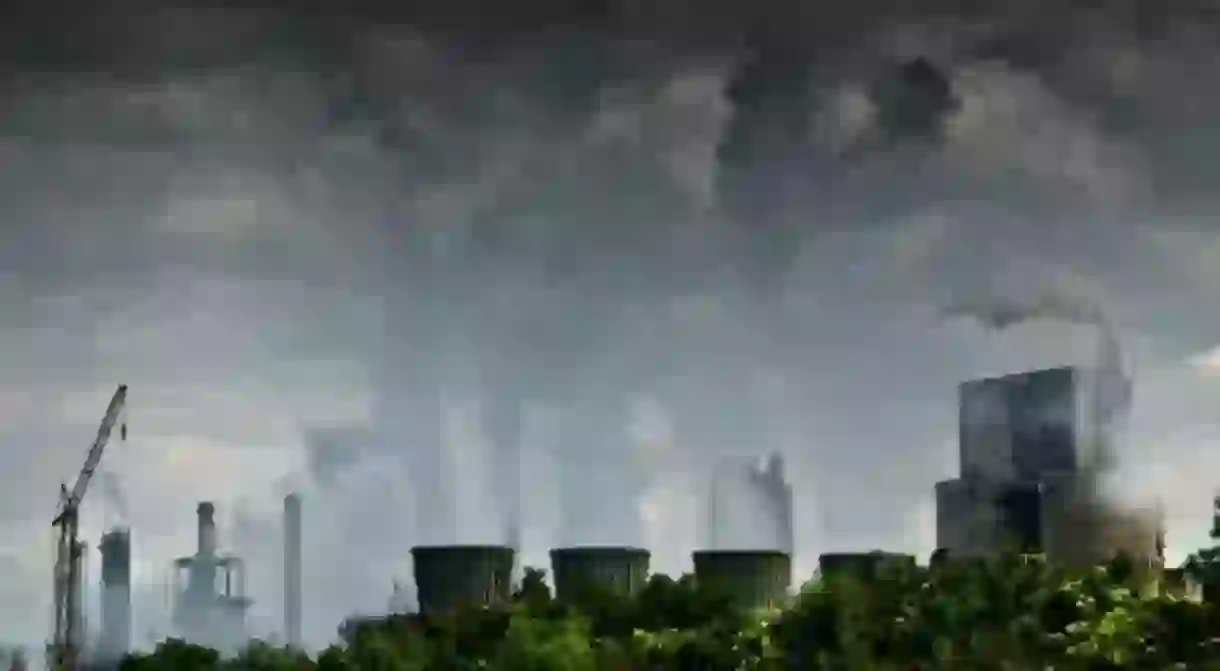India's Air Pollution Crisis Is Getting Worse, And Here's Why

India’s air pollution crisis doesn’t seem to end, it appears to be getting worse with every passing day, breaching previous threshold levels. The deadly ultra-fine airborne particles PM 2.5 and PM 10 are rife in the air in India, killing millions across the country and costing the country’s economy USD 38 billion annually in lost labour income.
The air quality in India, according to a Greenpeace India Report, is worse than tobacco usage as no one can escape it. As per the report, 1.2 million deaths occur every year in India due to air pollution, which apparently leads to a loss of nearly 3% of India’s GDP.

The ever-growing population in India has led to industrialization and over-dependence on coal as a major energy source, which has ultimately contributed to the hazardous air pollution – the air is now filled with toxic fumes from factories, industries, coal plants, cars and buses. Trash fires, crop residue burning, dusty construction sites and burning of fire crackers exacerbate the problem, thus endangering public health and the environment.
The most polluted city in India is Delhi with level of PM10 about 268 grams per cubic meter, which is way beyond the pollution safety limit, followed by Ghaziabad, Bareli and Allahabad (Uttar Pradesh); Faridabad (Haryana); Alwar (Rajasthan); and Ranchi, Bastacola and Kusunda (Jharkhand), with levels of PM 10 ranging between 258 grams per cubic meter and 200 grams per cubic meter.

The air pollution has also resulted in a reduction in solar power generation by as much as 25%. How? The dust particles and pollutants floating in the air deposit on the solar panels, making it more difficult for the solar radiation to convert into energy, hence leads to the reduction in the power generation and the lifespan of the solar panel is also reduced.
Also, the air pollution blocks the solar radiation from reaching the panel, and the energy output plummets as the smog sets in. Currently, the loss of energy output in India amounts to nearly 3900 megawatts, a gigantic loss.

Unpolluted and fresh air is essential for healthy living, and it is hard to come by in India, with many areas shrouded in smog and showing few signs of improvement. In a bid to tackle this crisis, several measures have been taken by the government, for instance, reducing the traffic on roads by increasing the fuel taxes, green taxes on commercial vehicles in Delhi have been increased by 100%, encouraging the use of public transportation and car pooling, imposing congestion fees, formation of cycle paths and vehicle-free zones, switching to clean and green technologies that will reduce carbon footprints, and bans on waste and crop residue burning.
In addition to this, several companies and activists have joined hands to reduce the air pollution that is killing millions every year. One such company that is helping to curb increasing air pollution in India is Graviky Labs, who are turning carbon emissions into Air-Ink – an innovative approach, indeed. A group of three students from Delhi have made air pollution monitoring drones to curb this menace.














